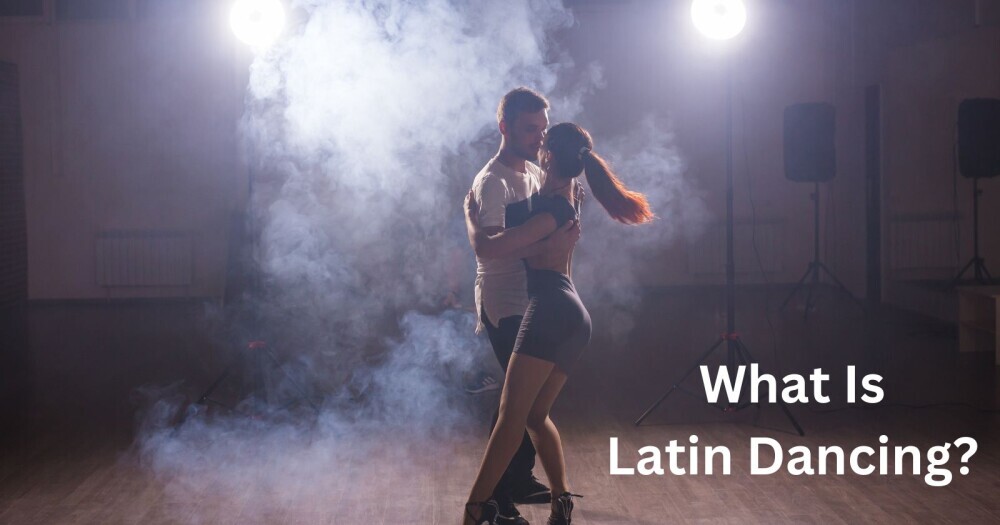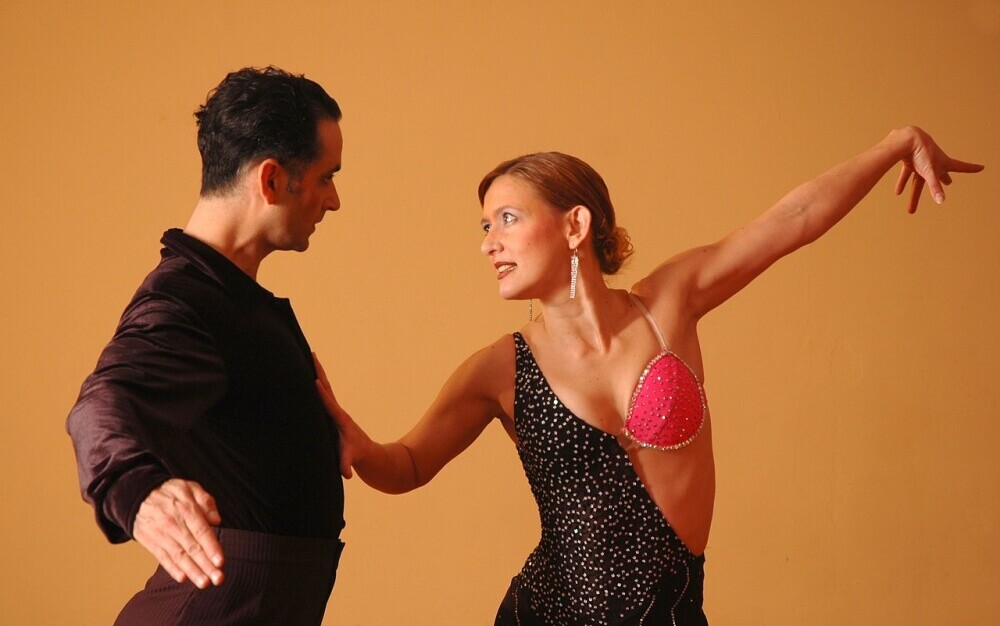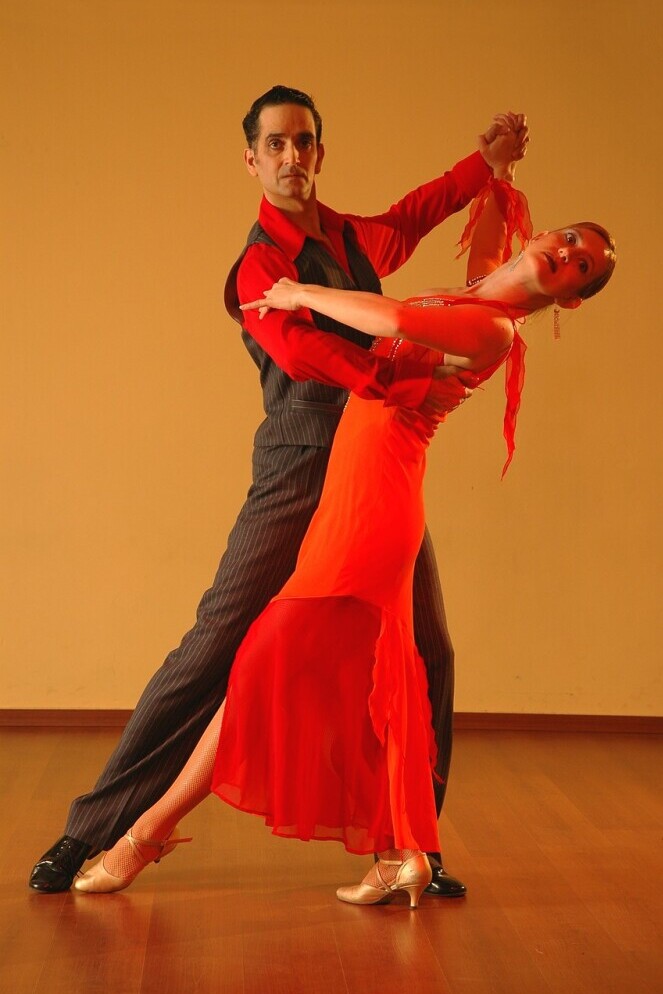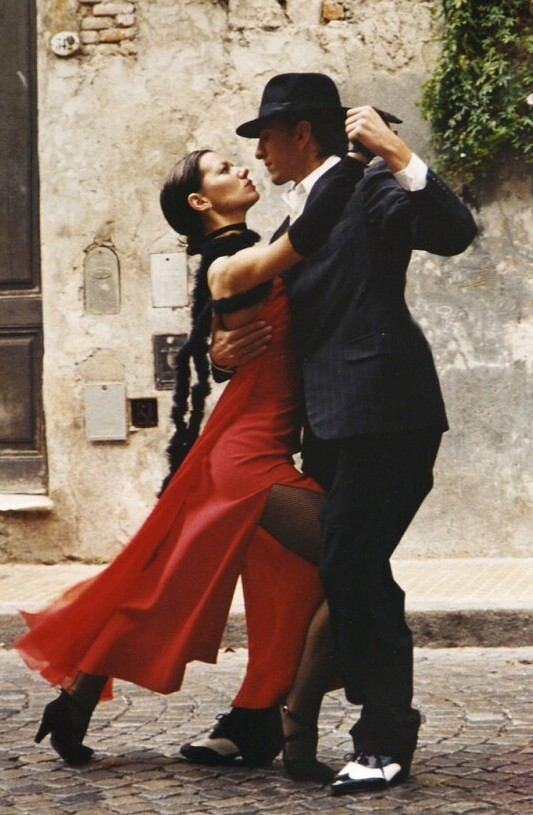What is Latin Dancing? Well to me it is a fusion of passion and precision between two people.
Latin dance is like an electric current that pulses through the room, charging everyone in its path.
At the core of its irresistible allure are passion and rhythm—two elements that transform each movement into a vibrant expression of life itself.
Enthusiasts tap into these dances not just for the love of music but for the emotional release it provides. It’s a language of its own, where words don’t matter as much as the sway of hips and the beat of a drum.
What Is Latin Dancing?

These dances hold cultural significance that is reflected in every sway and turn. Latin American Dancing originates from countries bustling with life and color, like Cuba, Puerto Rico, and Brazil.
Latin dance speaks to the spirit of communities brought together by shared stories and celebrations. The rhythm beats alongside their history, telling tales of freedom, resilience, and joy. It’s this deeply rooted cultural essence that captivates people around the world.
Latin dance isn’t just big in its hometowns. Thanks to its infectious energy and expressive style, it has taken the world by storm. From Salsa clubs in Barcelona to Rumba workshops in New York, the Latin dance craze is unstoppable. It’s more than just learning steps; it’s about feeling the music and letting it guide you.
The universal appeal comes from its open doors. Whether you’re a seasoned dancer looking to add some spice to your repertoire or a beginner trembling with excitement (and maybe a little nervousness), Latin dance welcomes all. What matters is the willingness to let go and let the music lead. Dive into this vibrant world, and watch as the rhythm breathes life into your steps, connecting you to a global community of dancers who move to the same beat.
Latin American Dancing has become big competition and here you can see some of the pros in action.
The Rich History of Latin Dance
Latin dance is more than just a skill—it’s a time machine whisking us through centuries of influence and evolution. Imagine stepping back to the lively streets where it all began, each dance style forming from the synergy of African, Indigenous, and European cultures. These dances reflect a vibrant tapestry of history and tradition, each twist and turn a reminder of their rich beginnings.

Take Salsa, a dance born in the cultural melting pot of New York City yet deeply rooted in Cuban and Puerto Rican rhythms. It carries the beats of African percussion melded with Spanish guitar sounds, narrating a tale of cultural fusion. Salsa’s dynamic evolution from Cuban son and jazz to the nightclub favorite we know today is a testament to its adaptive, ever-evolving nature.
Then there’s the Rumba, which traces its origins back to African slave communities in Cuba. This dance is about storytelling—expressive gestures that convey powerful emotions and trials of the past. It’s a poignant reminder of the resilience and spirit that defines the people who carried these dances forward through adversity.
Don’t miss out on Mambo’s story, a lively dance that emerged from Havana. Its creation came during a time of big band music, and the Mambo hit the scene roaring with exuberance and flair. An exciting blend of rhythms and tempos, it captures both the structured elegance of ballroom styles and the wild energy of jazz.
The energetic Jive, influenced by swing dance, also plays its part in the overall picture. Born in the United States and later embraced by Europe, Jive embodies the joy and freedom people sought in the post-war era, resonating with an upbeat tempo that just makes you want to move.
The Cha Cha, a close relative of Mambo, rounds off this ensemble with its cheeky, syncopated rhythm. It’s a playful dance that made jaws drop and feet glide when it first hit the international dance floors in the 1950s. Created to be an easy-going, fun dance, it provided people with a light-hearted escape and continues to do so, charming dancers with its lively flair.
Understanding the history of these dance styles adds depth to every step you take. It’s like having a conversation with the past while dancing in the present. So next time that rhythm takes over, remember you’re not just dancing—you’re becoming part of a story centuries in the making.
Diversity in Motion
Salsa is often the life of the party, known for its fast-paced, electric movements that make you feel alive. It’s versatile and can be adapted to various music styles, making it a favorite in clubs and social gatherings worldwide. The quick steps, spins, and hip actions might seem complex at first, but with some practice, you’ll find yourself moving with the flow in no time.
Rumba is the dance of love, emphasizing slow, sensual movements that speak volumes without a single word. It’s a dance where the dialogue happens through graceful, deliberate steps, and it’s all about the connection between partners. The focus is on body language and rhythm, making every movement a conversation.
Mambo brings in a mix of disciplines with its syncopated beats and dramatic poses. Often considered a show-style dance, Mambo is about flair and expression. It combines elements of various Latin and jazz influences to create something vibrant and entertaining. Even if you’re new to dancing, starting with Mambo classes can boost your confidence through its dynamic routines.
Jive jumps in with a burst of energy and playful vibes. It’s characterized by fast footwork and high kicks, making it lively and fun. Often associated with Rock and Roll, jive incorporates an infectious spirit that invites everyone to join in. It’s all about having a good time and letting the music guide your movements.
Cha Cha, recognizable by its distinct “one, two, cha-cha-cha” rhythm, is an upbeat, flirtatious dance that’s easy to pick up. With its playful steps and cheeky movements, Cha Cha is all about having fun and expressing joy. It’s casual, captivating, and a great entry point for anyone curious about Latin styles.
Engaging with Latin Dance Today
Latin dance isn’t just a performance; it’s an experience that invites anyone, anywhere, to jump in and feel the rhythm. If you’re thinking about getting started, there are plenty of ways to embrace this vibrant world and connect with a community that shares your passion for music and movement.
Joining a local dance class is a great way to learn the steps while meeting new people with similar interests. These classes usually cater to all levels, from beginners taking their first steps to advanced dancers looking to refine their technique. It’s all about the camaraderie and joy that comes with learning alongside others.

Online resources and tutorials have also made it easier than ever to explore Latin dances from the comfort of your own home. Whether it’s Salsa, Cha Cha, or any other style that piques your interest, there’s a tutorial out there to guide you. It’s a flexible option for those with a busy schedule or those who prefer learning solo before hitting the social dance floor.
Besides being a fun pastime, Latin dance offers a myriad of benefits for both mental and physical health.
Regular dancing can improve cardiovascular health, increase endurance, and even reduce stress. The social aspect enhances your mood and provides a sense of belonging, crucial for mental well-being.
For many, the passion for Latin dance becomes a transformative journey. It isn’t just about mastering the moves; it’s about the stories and friendships formed along the way. Listening to personal stories from individuals who found confidence and joy through dance is inspiring. It reminds us that, at its heart, dancing is about freedom and self-expression.
I hope you now have a better idea of what is Latin Dancing and I have made you feel like you need to go and try it out.
Whether you’re stepping into a class or turning up the volume at home, the key is to let go and enjoy the experience. Latin dance is about celebration, so lose yourself in the rhythm and let the music carry you away.


This is such an inspiring deep dive into the world of Latin dancing! I love how you highlighted the cultural significance and emotional connection behind each style, from Salsa’s vibrant roots to the storytelling in Rumba. The way you’ve connected history, rhythm, and personal expression truly showcases the universal appeal of Latin dance. I’m curious, which dance style do you think is the most beginner-friendly for someone with no prior experience? It would be great to hear your perspective on starting this exciting journey!
Hi Hanna,
All the Latin Dancing styles are beginner-friendly to start off with. The basics are simple to start off with and progress as you do, so anybody at any age can learn this fun dance style, and it is even more fun if you have a partner to go with it.
Wow, Michel, your description of Latin dancing makes it leap off the page, it’s as if I can hear the drums and feel the rhythm just from reading! I love how you highlighted the cultural roots and emotional depth behind each dance style; it’s like dancing is not just movement but a storytelling art form.
Your section about the benefits of Latin dancing really resonated with me. Beyond the obvious physical perks, the mental and emotional boost from the sense of community and joy is such a beautiful angle.
Speaking of which, do you think the cultural stories and emotions tied to these dances are as impactful for beginners as they are for seasoned dancers?
Or does that appreciation grow as you develop your skills?
Most dancers start dancing because they watch it and fall in love with it and want to try it for themselves. Once they realize that it is not as easy as it looks, then I think the appreciation starts.
Hello Michel!
This article provides a fantastic introduction to the vibrant world of Latin dancing! I love how it highlights the rich cultural heritage and the variety of dance styles under the Latin umbrella, like salsa, cha-cha, and tango. The emphasis on the passion and rhythm that define these dances makes it clear why they’re so captivating.
I’m curious—what would you recommend as the best way for beginners to get started with Latin dancing? Are there specific styles that are easier to pick up for those new to the art?
Thank you for sharing such an engaging and informative read. It’s inspiring to see how Latin dancing brings people together through music, movement, and culture!
Angela M 🙂
Hi Angela.
As a beginner I would start with a social group class to learn the basics and take it from there. Once you have mastered the basics it is easier to start refining your technique.